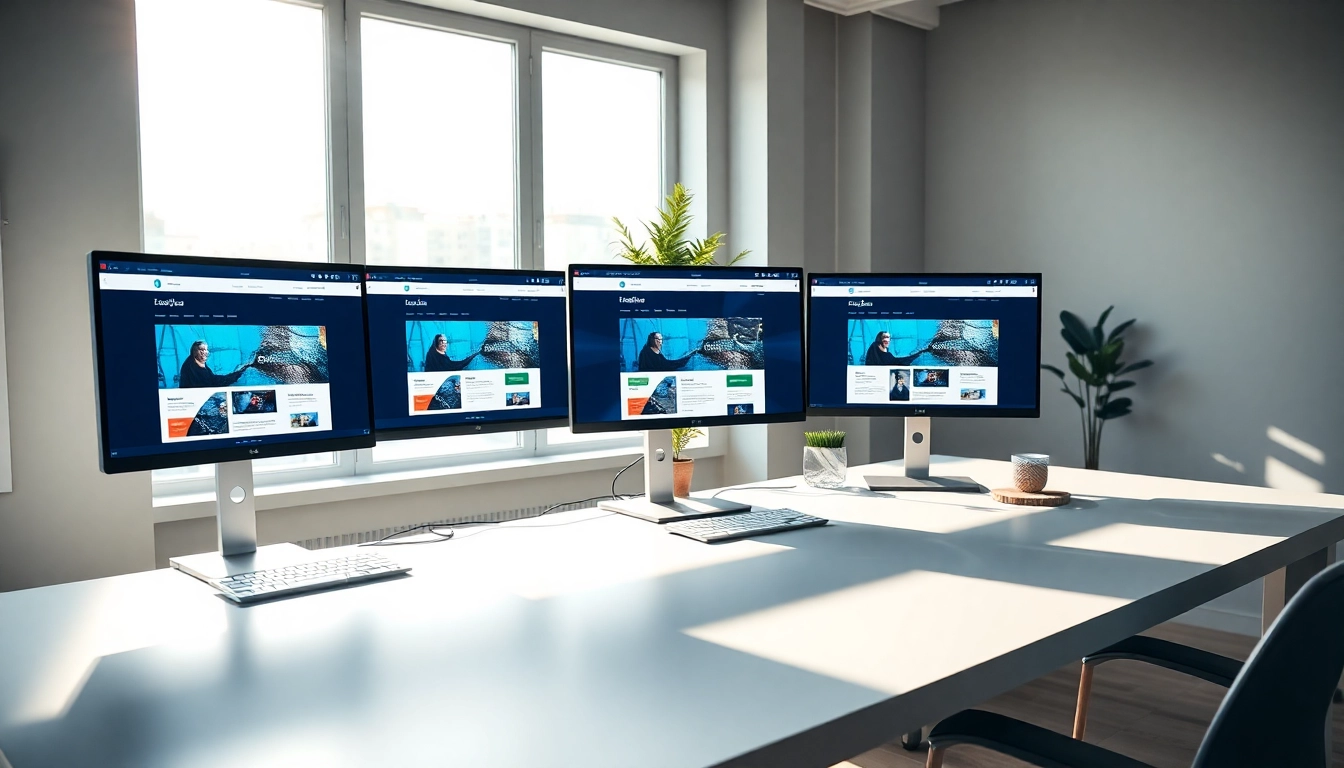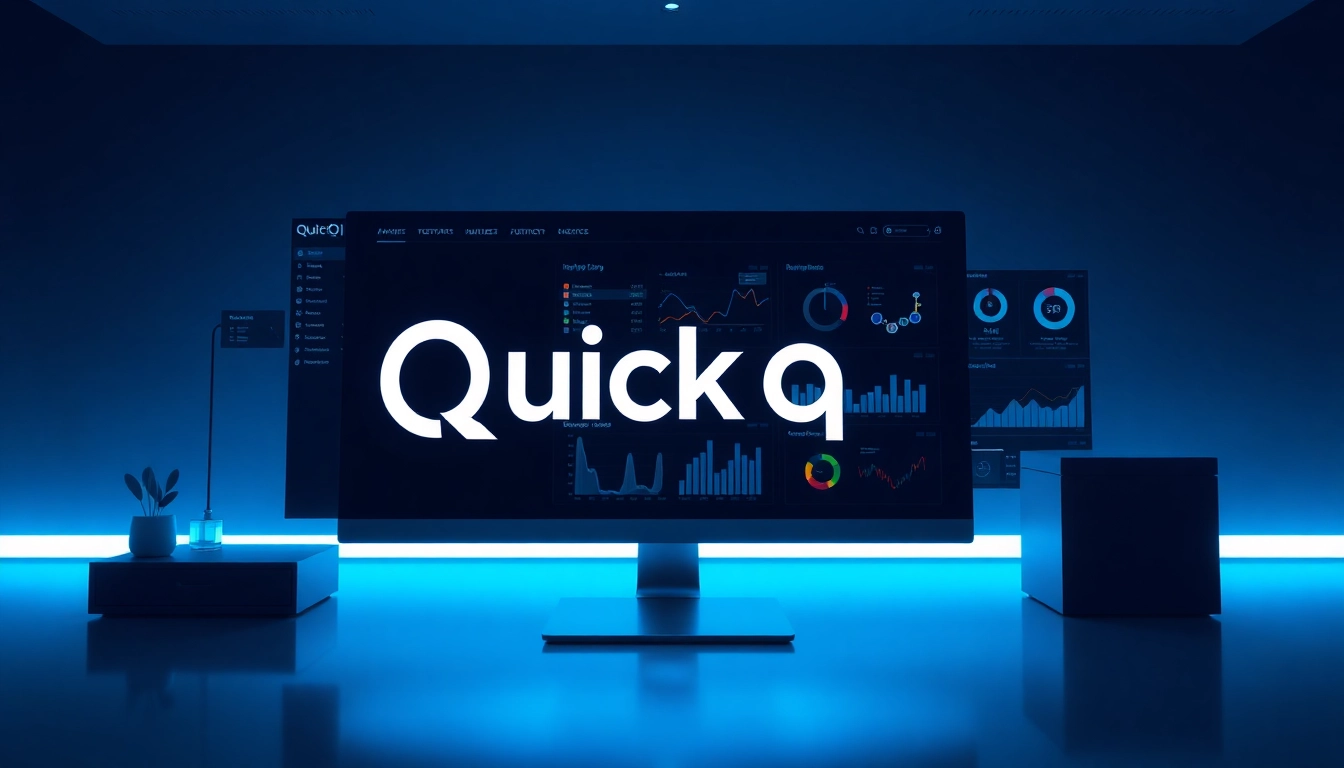Understanding Multi-screen Digital Signage Management
Definition and Importance
Multi-screen digital signage management refers to the practice of coordinating content across various digital displays in multiple locations, creating a cohesive and dynamic visual experience. As businesses increasingly turn to technology for communication and marketing, understanding this management system becomes crucial. Multi-screen setups allow organizations to engage their audience through immersive and interactive content, enhancing brand visibility and customer experience.
In the realm of Multi-screen digital signage management, strategic planning and execution are essential. An effective signage system connects various screens to display synchronized content, be it advertisements, media presentations, or informational displays. This integrated approach leads to greater information retention and engagement, thereby making it an important asset for modern businesses.
Applications Across Industries
Multi-screen digital signage has a wide range of applications across various sectors:
- Retail: Retail businesses utilize multi-screen setups to showcase product promotions, enhance visual merchandising, and provide wayfinding solutions. Interactive kiosks can allow customers to browse inventory and locate items efficiently.
- Healthcare: Hospitals and clinics use multi-screen signage to inform patients and visitors about waiting times, directions, and health services.
- Transportation: Airports and train stations employ digital signage for real-time updates on arrivals, departures, and service announcements, contributing to a smoother travel experience.
- Education: Schools and universities use multiple screens for displaying schedules, event notifications, and educational content, fostering engagement within the campus environment.
- Corporate: Businesses leverage multi-screen digital signage during conferences and internal meetings for presentations, employee recognition, and important updates, maintaining a lively workplace atmosphere.
Advantages of Multi-screen Solutions
Investing in a multi-screen digital signage system offers several advantages:
- Enhanced Engagement: Multi-screen arrangements capture attention more effectively than single screens, as they provide varied visual stimuli.
- Versatile Content Display: Organizations can display different content on each screen, allowing for targeted messaging based on demographics or location.
- Increased Awareness: With strategic placement around high-traffic areas, multi-screen setups can significantly improve brand visibility and recognition.
- Streamlined Management: Centralized software enables easy updates and content scheduling across multiple screens, saving time and resources.
Setting Up Your Multi-screen Digital Signage System
Selecting the Right Hardware
Choosing the appropriate hardware is vital for creating an effective multi-screen digital signage system. Consider factors such as display resolution, screen size, and mounting options:
- Display Resolution: Opt for high-definition displays to ensure content is clear and visually appealing. 4K or Full HD displays are ideal for vibrant visuals.
- Screen Size: The size of screens should reflect their placement. Larger screens are suitable for expansive areas, while smaller displays can work for closer interactions.
- Mounting Options: Decide whether to mount screens on walls or use stands. Ensure that the placement aligns with your content strategy and audience flow.
Software Options for Management
Next, selecting the right software is key to managing your digital signage system. Various content management systems (CMS) specialize in multi-screen setups, allowing users to:
- Schedule Content: Plan content distribution effectively, determining when and where specific content will appear.
- Monitor Performance: Track engagement metrics and screen performance to adjust strategies as needed.
- Provide Remote Access: Some software solutions offer cloud capabilities, enabling managers to update content from anywhere.
Designing Effective Content
Engaging content is the heart of any successful multi-screen digital signage. Consider these design principles:
- Consistency: Maintain brand consistency in visuals and messaging across all screens.
- Call-to-Action: Encourage viewers to take specific actions, whether it’s visiting a website or making a purchase.
- Dynamic Elements: Use video, animations, and interactive features to capture and hold audience attention.
- User-Friendly Design: Ensure that content is easy to read and navigate, especially in high-traffic areas.
Best Practices for Managing Multi-screen Digital Signage
Content Scheduling and Planning
A systematic approach to content scheduling will help ensure that your digital signage remains relevant and engaging. Utilize the following best practices:
- Dynamic Scheduling: Regularly update content to reflect current promotions, events, or changes in services.
- Target Audience: Tailor content according to specific demographics or locations, enhancing relevance and engagement.
- Optimize Timing: Schedule content based on peak viewer times to maximize exposure. Analyze foot traffic data to determine optimal upload times.
Real-time Updates and Engagement
Engagement with viewers can be heightened through real-time updates, including:
- Live Feeds: Incorporate live news, social media, or event updates to create a dynamic viewer experience.
- Interactive Elements: Involve viewers through polls, quizzes, or interactive displays that encourage participation.
Monitoring Performance
Evaluating the effectiveness of your digital signage requires consistent monitoring. Optimize performance by:
- Setting Metrics: Define success metrics such as engagement rates, viewer retention, and conversion rates.
- Utilizing Analytics Tools: Leverage data analytics to assess content performance and viewer engagement patterns.
Common Challenges in Multi-screen Digital Signage Management
Technical Issues
Despite the potential benefits, multi-screen digital signage can pose various technical challenges:
- Hardware Malfunctions: Regular maintenance and updates can prevent unexpected hardware failures. Have backup systems available to ensure minimal downtime.
- Compatibility Problems: Ensure all hardware and software are compatible, facilitating smooth operation across screens.
Content Management Difficulties
Managing diverse content across multiple screens can be complex. Some recommendations for overcoming these challenges include:
- Centralized Control: Use a unified content management platform to streamline updates and reduce the risk of inconsistency.
- Content Creation Flow: Establish clear workflows for content creation and approval processes to prevent bottlenecks.
Cost Considerations
Budgeting for a multi-screen digital signage system involves several considerations:
- Initial Investment: Be prepared for upfront costs related to hardware, software, and installation.
- Ongoing Costs: Factor in maintenance, software subscriptions, and content creation costs when planning your budget.
Measuring Success in Digital Signage Implementation
Key Performance Indicators
Establishing KPIs is vital for understanding the effectiveness of your digital signage strategy. Common KPIs include:
- Viewership Metrics: Track audience reach and engagement levels through analytics tools.
- Conversion Rates: Measure how many viewers take actionable steps as a result of interacting with your signage.
Gathering User Feedback
User feedback is invaluable in optimizing your digital signage. Incorporate feedback loops through:
- Surveys: Collect viewer opinions on content relevance and engagement.
- Usability Testing: Conduct tests to assess how easily viewers can navigate and interact with your signage.
Continuous Improvement Strategies
To maintain a competitive edge, continuously improve your digital signage strategy through:
- Regular Reviews: Periodically assess your content and strategy to adapt to changes in audience behavior and technology.
- Innovation: Explore new technologies and trends to keep your signage fresh and engaging.















Leave a Reply